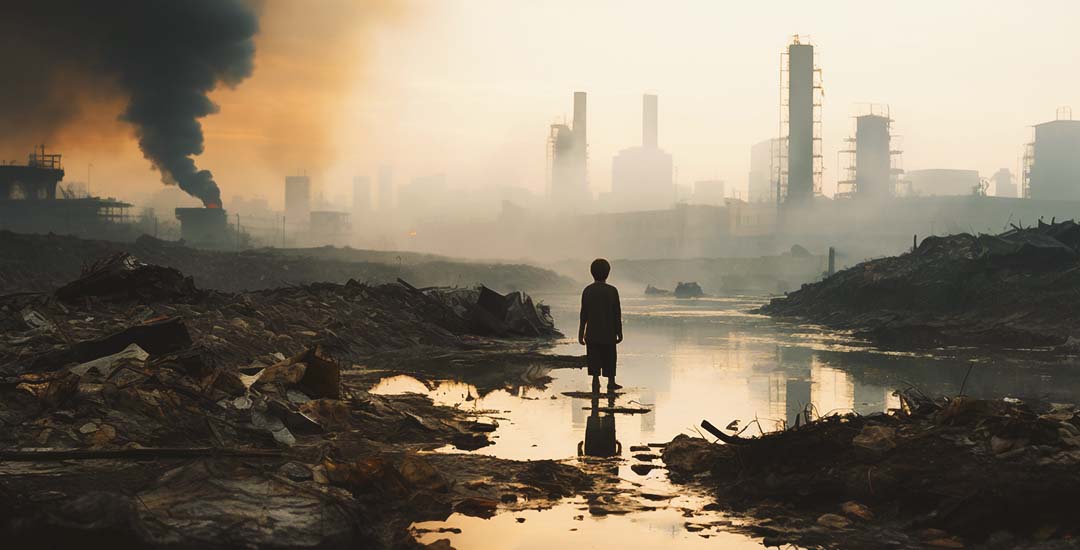
Indonesia Forest Emergency, Deforestation Potential Disaster
EnvidataID, Semarang – Deforestation in upstream areas has a significant impact on the quality of the environment and the lives of the surrounding communities. Illegal logging, forest fires, and land conversion for plantations or settlements have caused a decrease in the area of forest (Source: Journal of Undip). This decrease in forest cover not only threatens biodiversity, but also affects water availability and increases the risk of natural disasters such as floods and landslides.
Data from Forest Watch Indonesia shows that the deforestation rate decreased to 1.5 million hectares per year in 2000-2009, and 1.1 million hectares per year in 2009-2013. However, the period 2013-2017 recorded an increase again to 1.46 million hectares per year (Source: fwi.or.id). The Ministry of Environment and Forestry (KLHK) reported a decrease in the net deforestation rate to 462.46 thousand hectares in 2018-2019, and 115.46 thousand hectares in 2019-2020, marking a decrease of 75.03% (Source: cakaplah.com). In 2021-2022, net deforestation was recorded at 104 thousand hectares, down 8.4% from the previous period (Source: ppid.menlhk.go.id). However, the Auriga Nusantara report recorded deforestation of 257,384 hectares in 2023, including in 31 national parks, 45 nature reserves, and 26 wildlife sanctuaries (Source: kompas.id).
Disaster Potential
Deforestation in upstream forest areas has a significant negative impact on the ecosystem, from upstream to downstream, including the sea. Here is an explanation of these impacts:
- Increased Risk of Flooding and Landslides: Upstream forests play an important role in absorbing rainwater and stabilizing the soil. Loss of forest cover due to deforestation reduces the soil’s ability to absorb water, increasing surface runoff that can cause flooding in downstream areas. In addition, lost tree roots reduce soil stability, increasing the risk of landslides. For example, on Siberut Island, West Sumatra, upstream deforestation is associated with frequent flooding in downstream villages (Source: mongabay.co.id).
- Soil Erosion and River Sedimentation: Upstream forest tree roots function to hold soil and prevent erosion. Deforestation makes the soil susceptible to erosion by rainwater, which results in increased sedimentation in rivers. This sedimentation can reduce river capacity, increase the risk of flooding, and disrupt aquatic habitats (Source: liputan6.com).
- Water Cycle Disruption: Upstream forests play a role in regulating the water cycle by absorbing and releasing water gradually. Deforestation disrupts this cycle, causing unstable water flows, which can impact water availability in downstream areas and increase the risk of drought or flooding (Source: greenlab.co.id).
- Coastal and Marine Ecosystem Degradation: Increased sedimentation due to upstream soil erosion can be carried to coastal and marine areas, causing damage to ecosystems such as coral reefs and mangrove forests. In addition, deforestation of mangrove forests itself increases coastal abrasion and reduces natural protection against ocean waves (Source: kupastuntas.co).
- Water Quality Deterioration: Land conversion in upstream areas, such as deforestation and conversion to agricultural land, can increase river pollution. These activities often add pollutant loads such as sediment, nutrients, and agricultural chemicals to water bodies, which negatively impact water quality downstream (Source: neliti.com).
Deforestation cases in Indonesia
Deforestation for land clearing in Indonesia has caused significant environmental damage. Here are some real-life examples that illustrate these impacts:
- Gunung Leuser National Park: In 1995, the Langkat Regency government proposed building a road to connect the Sapo Padang enclave within the national park. In 1998, the Indonesian Ministry of Forestry granted permission for the construction of an 11 km road. However, the project caused extensive forest destruction within the national park, including illegal logging and clearing for oil palm plantations. As a result, there was significant ecosystem destruction in the area (Source: en.wikipedia.org).
- Kalimantan and Sumatra: Since the 1970s, deforestation has increased rapidly in Indonesia, especially in Kalimantan and Sumatra. Lowland tropical forests rich in timber resources and biodiversity were almost completely lost in Sulawesi by 2000 and are expected to disappear within a few years in Sumatra and Kalimantan. In Kalimantan, from 1991 to 2014, large areas of forest were burned by uncontrolled fires, causing air pollution throughout Southeast Asia (Source: en.wikipedia.org).
- Illegal Palm Oil Plantations: In 2021, a study estimated that 81% of forest conversion for palm oil in Indonesia was done illegally. Indonesia’s Supreme Audit Agency found that less than 20% of palm oil operations in the country comply with national laws and regulations. These illegal practices lead to widespread deforestation and severe environmental damage (Source: en.wikipedia.org).
Deforestation in Indonesia’s upstream areas has caused significant environmental degradation, threatening biodiversity, disrupting the water cycle, and increasing the risk of disasters such as floods and landslides. Although the rate of deforestation has decreased, recent reports show that forest destruction is still occurring, even in conservation areas. Cases such as land clearing in Gunung Leuser National Park, forest fires in Kalimantan and Sumatra, and illegal conversion for oil palm plantations show that uncontrolled forest exploitation has serious impacts on ecosystems and human life. Therefore, sustainable forest management and stricter law enforcement are urgent steps to prevent greater environmental disasters in the future.
Source: envidata.id | wikipedia.org | neliti.com | kupastuntas.co | greenlab.co.id | liputan6.com | mongabay.co.id | kompas.id | ppid.menlhk.go.id | cakaplah.com | fwi.or.id | undip.ac.id

